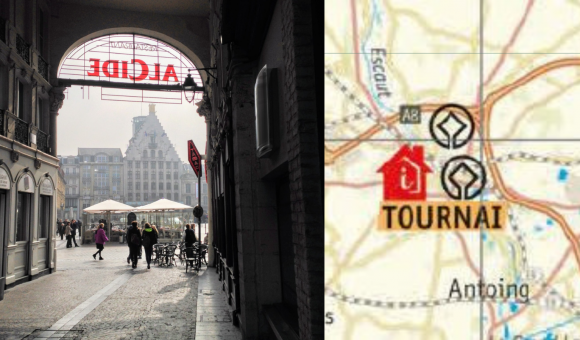
When I visited Lille in the 1990s I always hurried to the metro station to travel out to the Lille-3 campus to teach my classes. Although I did find the Furet bookshop I was always intrigued by a great arched entrance that was way across the Grand’Place. I never had time to explore it. The sign in the arch said AlCide, with the letter C larger than the rest, so from my distant, unknowing point of view I thought it said Al Cide, which meant possibly The Master in Arabic. I never took that diagonal route to traverse the great square to find out anything more about the master, Al Cide.
Until I took a group of students to Lille twenty years after my teaching visits. I used literary history to work out the year. Patrick Modiano had won the Nobel Prize in December 2014 and it was a display of the new laureate’s novels that drew me into the Furet bookshop. So, it must have been March 2015 when I was back in Lille. During this stay in the city, I determined to visit the Master. When I headed directly to the Alcide arch, the square became a folded triangle. I crossed the rue Nationale. It took no time at all. Google says 140 metres. Why hadn’t I walked that short route twenty years earlier? It seemed so far then, so out of the way. This spatial question is topological because it includes time and culture, rather than geography alone. Rob Shields reminds us of this in his reproduction of the problem of the walker and the seven bridges (Shields 2013, 107-111).
It was just after 11am when I arrived beneath the Alcide arch. I turned and looked out towards Tournai. The spring sunshine glazed the buildings in the east into a bright haze. The triangular gable of the 1930s newspaper building, though, was still very clear. You could make out the sparrow steps of the gable. They were a cultural reference to the stepped gables that protected thatched roofs from being lifted by the winds of northern Europe in the Middle Ages.
We can see literary topology at work in the Maigret novel that I have just finished reading for this research on Wallonia, too. I will tell you more in the next post. Join me soon.
Reference
Shields, R. (2013) Spatial Questions: Cultural Topologies and Social Spatialisations, London: Sage.

